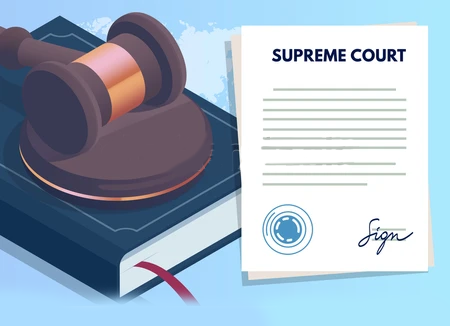
14-09-2023 (Important News Clippings)
To Download Click Here.
 Date:14-09-23
Date:14-09-23
Scrap It
SC did well to place sedition before a constitution bench. This law, in any form, has no place
TOI Editorials
The Supreme Court on Tuesday referred the validity of the sedition law, Section 124A of IPC, to a five-judge constitution bench. The backstory is that in May 2022, SC suspended the operation of the sedition law while it was under consideration in a case. Subsequently, GOI introduced a bill, Bharatiya Nyaya Sanhita, 2023 to replace IPC. SC ignored this development, and rightly so, as any law to replace IPC will have prospective effect. Sedition has often been misused – prominent examples include its application in agitations on reservations or even the one against the Kudankulam nuclear plant. Many thousands remain affected by open sedition cases.
There are also other reasons to justify SC’s move. The wording of Section 150 of BNS has significant overlap with IPC’s sedition law. A constitution bench’s verdict on sedition will be useful to the parliamentary committee that’s studying BNS. The primary problem with the sedition law was summed up by former CJI NV Ramana. He said that if the police want to fix somebody, sedition is invoked. The law has lent itself to misuse because of loose wording. It’s also led to jurisprudence that’s not quite in sync.
The constitutionality of sedition was upheld by a five-member SC bench in 1962. Interpretations of when it could be invoked have evolved in line with the ways the judiciary has dealt with fundamental rights. Consequently, we have moved from justifying sedition when there’s a “tendency” to public disorder towards proximity, such as a “spark in a powder keg”. Eventually, there was a line of demarcation drawn between advocacy that is not punishable and incitement which can call for police action. Regardless of what SC has said over time, the only constant factor is that sedition has been consistently misused by police forces in India to clamp down on expression or protests that inconvenience governments.
Sedition in its current form or even in a revised manner has no place in India. In power, all political parties have shown the same inclination to misuse the sedition law. The most important lessons from India’s experience with it is that there needs to be clear demarcation between the state and the government. The latter is in place for a fixed duration and there are limitations on its exercise of power. Loosely worded laws always lead to abuse of power.
Follow Your CSR Monumental Money
ET Editorials

On paper, this is win-win for everyone. The benefits of keeping monuments in top condition are many. Along with ensuring that they age gracefully, the economic spinoff of well-maintained monuments is immense. Good tourist flow can ensure not just gate money for monuments but also for those associated with the tourism industry. In 2022, the sector contributed ₹15.7 lakh crore to the Indian economy. By end-2023, it is expected to touch ₹16.5 lakh crore. For any city or town, a good inflow of tourists means pressure on governments to maintain associated infrastructure and security.
But while CSR funding is helpful, corporates shouldn’t treat such expenses as perfunctory gestures to meet regulatory obligations. This caveat is important as many companies write generous CSR cheques without following up on the implementation process. This approach can do more damage than good, for heritage monuments, even permanent damage. ASI must ensure that CSR funds are spent wisely and effectively, and any project undertaken with CSR funds is examined and supervised by experts as any infra project is. In the end, the health of these monuments are ASI’s responsibility.
जी-20 की बड़ी कामयाबी के पांच सबसे प्रमुख कारण
पलकी शर्मा,( मैनेजिंग एडिटर )
आपको पता है एक शानदार पार्टी खत्म होने के बाद कैसा लगता है? पार्टी वाली जगह सुनसान हो जाती है, मेहमान अपने घर लौट जाते हैं, और मेजबान उस जलसे की अनुभूति को मन ही मन दोहराते रहते हैं। भारत की अभी यही स्थिति है। जी-20 समिट का समापन हो गया और यह एक बड़ी कामयाबी साबित हुई है। नई दिल्ली की सधी हुई कूटनीति ने इस समिट के माध्यम से पांच उल्लेखनीय सफलताएं पाई हैं।
1. अफ्रीकन यूनियन की सदस्यता के प्रस्ताव की अगुवाई भारत ने की थी। यह केवल एक नीतिगत विचार ही नहीं था, इसके पीछे एक ऐतिहासिक भूल को सुधारने की भावना भी थी और नई दिल्ली को इस उपलब्धि पर गर्व होना चाहिए। पश्चिम समावेश की बातें तो करता है, लेकिन भारत ने दिखाया है कि इसे अमल में कैसे लाया जाता है। जैसा कि विदेश मंत्री एस. जयशंकर ने कहा, यह ग्लोबल-साउथ के लिए एक वृहत्तर-संदेश है और उनकी जरूरी चिंताओं के समाधान की कोशिश भी।
वास्तव में अफ्रीकन यूनियन भारत की प्राथमिकताओं में शुमार थी। इसी साल जनवरी में प्रधानमंत्री नरेंद्र मोदी ने एक वर्चुअल समिट की मेजबानी की थी, जिसे वॉइस ऑफ ग्लोबल-साउथ का नाम दिया गया था। इसमें लगभग 125 देश शामिल हुए थे। यानी भारत को जी-20 की प्रेसिडेंसी मिलने की शुरुआत से ही यह मन बना लिया गया था कि भारत ग्लोबल-साउथ की आवाज बनकर उभरेगा। जब भारत के प्रधानमंत्री ने अफ्रीकन यूनियन के प्रेसिडेंट को गले लगाया तो दुनिया को एक तस्वीर में दो संदेश मिले : मोदी का नेतृत्व और शी जिनपिंग की अनुपस्थिति!
2. जी-20 समिट में 43 वैश्विक-नेता शामिल हुए थे, जिनमें 20 राष्ट्राध्यक्ष, 9 मेहमान-देश और 14 वैश्विक-एजेंसियों के प्रमुख थे। यह किसी भी जी-20 समिट में अभी तक का सबसे बड़ा टर्नआउट था। समिट का एजेंडा भी इतना ही प्रभावी साबित हुआ। इसमें जिन मसलों पर चर्चा की गई, उनमें क्लाइमेट फाइनेंसिंग, सस्टेनेबल विकास, लैंगिक समानता, क्रिप्टो-करेंसी, बहुपक्षीय संस्थाओं में सुधार और कर्ज में राहत आदि शामिल थे। अंत में जारी किया गया दिल्ली घोषणा-पत्र 34 पेज का था। भारत ने यह सुनिश्चित किया कि फोकस सामाजिक और आर्थिक मसलों पर रहे, जो कि जी-20 का बुनियादी मंतव्य भी है।
3. जी-20 समिट का फोकस कूटनीति में सार्वजनिक-सहभागिता पर था और आंकड़े इसके गवाह हैं। भारत ने 60 शहरों में 220 बैठकें कीं। इसके पीछे विचार था कि जी-20 को राष्ट्रीय-राजधानी से परे ले जाया जाए। इसमें लगभग डेढ़ करोड़ लोग किसी न किसी रूप में शामिल हुए, जैसे संस्थागत कार्य या आतिथ्य-सत्कार और सांस्कृतिक कार्यक्रम। भारत जी-20 के लिए एक नया टेम्पलेट रचना चाहता था, जो बंद कमरों में होने वाली बैठकों के दायरे से बाहर हो। इसके पीछे की सोच स्पष्ट थी- अगर जी-20 के निर्णय लोगों को प्रभावित करते हैं तो इसकी प्रक्रिया में जनभागीदारी भी होनी चाहिए। भारत इसे जी-20 का लोकतंत्रीकरण कहता है।
4. सर्वसम्मति का निर्माण करना कहने में जितना सरल है, करने में उतना ही कठिन। पश्चिम और रूस इस समिट में एक फिक्स्ड माइंडसेट लेकर आए थे और वे उससे एक इंच भी डिगने को राजी नहीं थे। इसके चलते दूसरे बिंदु भी बेपटरी हो सकते थे। लेकिन अंत में भारत ने सर्वसम्मति के निर्माण में सफलता पाई और एक ऐसा घोषणा-पत्र जारी किया, जिससे सभी पक्ष सहमत हो सके। यह इसलिए महत्वपूर्ण है क्योंकि आज हम एक अत्यंत ध्रुवीकृत और विभाजित दुनिया में रह रहे हैं। पश्चिम को रूस और चीन से समस्या है और चीन को जापान और दक्षिण कोरिया से। ऐसे में भारत ने सर्वसम्मति के निर्माण का कठिन काम कर दिखाया।
5. इस समिट ने जी-20 की प्रासंगिकता और उसके प्रति विश्वास को फिर से बहाल किया है। सच्चाई यह है कि समिट से किसी को भी ज्यादा अपेक्षाएं नहीं थीं। कलह और आडम्बर का माहौल था। महामारी से यह धारणा और बदतर हो गई, जब जी-20 वैक्सीन की डिलीवरी सुनिश्चित नहीं कर पाया। न ही वह वैश्विक अर्थव्यवस्था की सुरक्षा कर सका। लोग सोचने लगे कि तब इस समूह का क्या औचित्य है। प्रधानमंत्री मोदी ने विश्वास के इस अभाव के बारे में बात की और इसे सुधारने की कोशिश की। अंत में सभी पक्षों ने समिट को एक बड़ी कामयाबी बताया। रूस और पश्चिम- दोनों ने भारत का अभिवादन किया। जाहिर है कि चीन मन ही मन कुढ़ रहा है। लेकिन भारत ने दिखाया है कि जी-20 आज भी क्यों मायने रखता है और इस समूह की रक्षा और विस्तार क्यों जरूरी है।
पुनर्समीक्षा का विचार सही
संपादकीय
